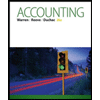Dividend Distribution Bowen Corporation has the following shares outstanding: 15,000 shares of $50 par value, six percent preferred stock and 50,000 shares of $5 par value common stock. During its first three years in business, the firm declared no dividends in the first year, $140,000 of divi- dends in the second year, and $60,000 of dividends in the third year. a. If the preferred stock is cumulative, determine the total amount of dividends paid to each class of stock in each of the three years. b. If the preferred stock is noncumulative, determine the total amount of dividends paid to each class of stock in each of the three years.
Dividend Distribution Bowen Corporation has the following shares outstanding: 15,000 shares of $50 par value, six percent preferred stock and 50,000 shares of $5 par value common stock. During its first three years in business, the firm declared no dividends in the first year, $140,000 of divi- dends in the second year, and $60,000 of dividends in the third year. a. If the preferred stock is cumulative, determine the total amount of dividends paid to each class of stock in each of the three years. b. If the preferred stock is noncumulative, determine the total amount of dividends paid to each class of stock in each of the three years.
Intermediate Accounting: Reporting And Analysis
3rd Edition
ISBN:9781337788281
Author:James M. Wahlen, Jefferson P. Jones, Donald Pagach
Publisher:James M. Wahlen, Jefferson P. Jones, Donald Pagach
Chapter16: Retained Earnings And Earnings Per Share
Section: Chapter Questions
Problem 12RE: Given the following year-end information, compute Greenwood Corporations basic and diluted earnings...
Related questions
Question
100%

Transcribed Image Text:E11-1B. Dividend Distribution Bowen Corporation has the following shares outstanding: 15,000 shares of
$50 par value, six percent preferred stock and 50,000 shares of $5 par value common stock. During
its first three years in business, the firm declared no dividends in the first year, $140,000 of divi-
dends in the second year, and $60,000 of dividends in the third year.
a.
If the preferred stock is cumulative, determine the total amount of dividends paid to each class
of stock in each of the three years.
If the preferred stock is noncumulative, determine the total amount of dividends paid to each
class of stock in each of the three years.
Expert Solution
This question has been solved!
Explore an expertly crafted, step-by-step solution for a thorough understanding of key concepts.
This is a popular solution!
Trending now
This is a popular solution!
Step by step
Solved in 4 steps

Recommended textbooks for you

Intermediate Accounting: Reporting And Analysis
Accounting
ISBN:
9781337788281
Author:
James M. Wahlen, Jefferson P. Jones, Donald Pagach
Publisher:
Cengage Learning

Corporate Financial Accounting
Accounting
ISBN:
9781305653535
Author:
Carl Warren, James M. Reeve, Jonathan Duchac
Publisher:
Cengage Learning

Accounting (Text Only)
Accounting
ISBN:
9781285743615
Author:
Carl Warren, James M. Reeve, Jonathan Duchac
Publisher:
Cengage Learning

Intermediate Accounting: Reporting And Analysis
Accounting
ISBN:
9781337788281
Author:
James M. Wahlen, Jefferson P. Jones, Donald Pagach
Publisher:
Cengage Learning

Corporate Financial Accounting
Accounting
ISBN:
9781305653535
Author:
Carl Warren, James M. Reeve, Jonathan Duchac
Publisher:
Cengage Learning

Accounting (Text Only)
Accounting
ISBN:
9781285743615
Author:
Carl Warren, James M. Reeve, Jonathan Duchac
Publisher:
Cengage Learning

Principles of Accounting Volume 1
Accounting
ISBN:
9781947172685
Author:
OpenStax
Publisher:
OpenStax College

Managerial Accounting: The Cornerstone of Busines…
Accounting
ISBN:
9781337115773
Author:
Maryanne M. Mowen, Don R. Hansen, Dan L. Heitger
Publisher:
Cengage Learning

Excel Applications for Accounting Principles
Accounting
ISBN:
9781111581565
Author:
Gaylord N. Smith
Publisher:
Cengage Learning